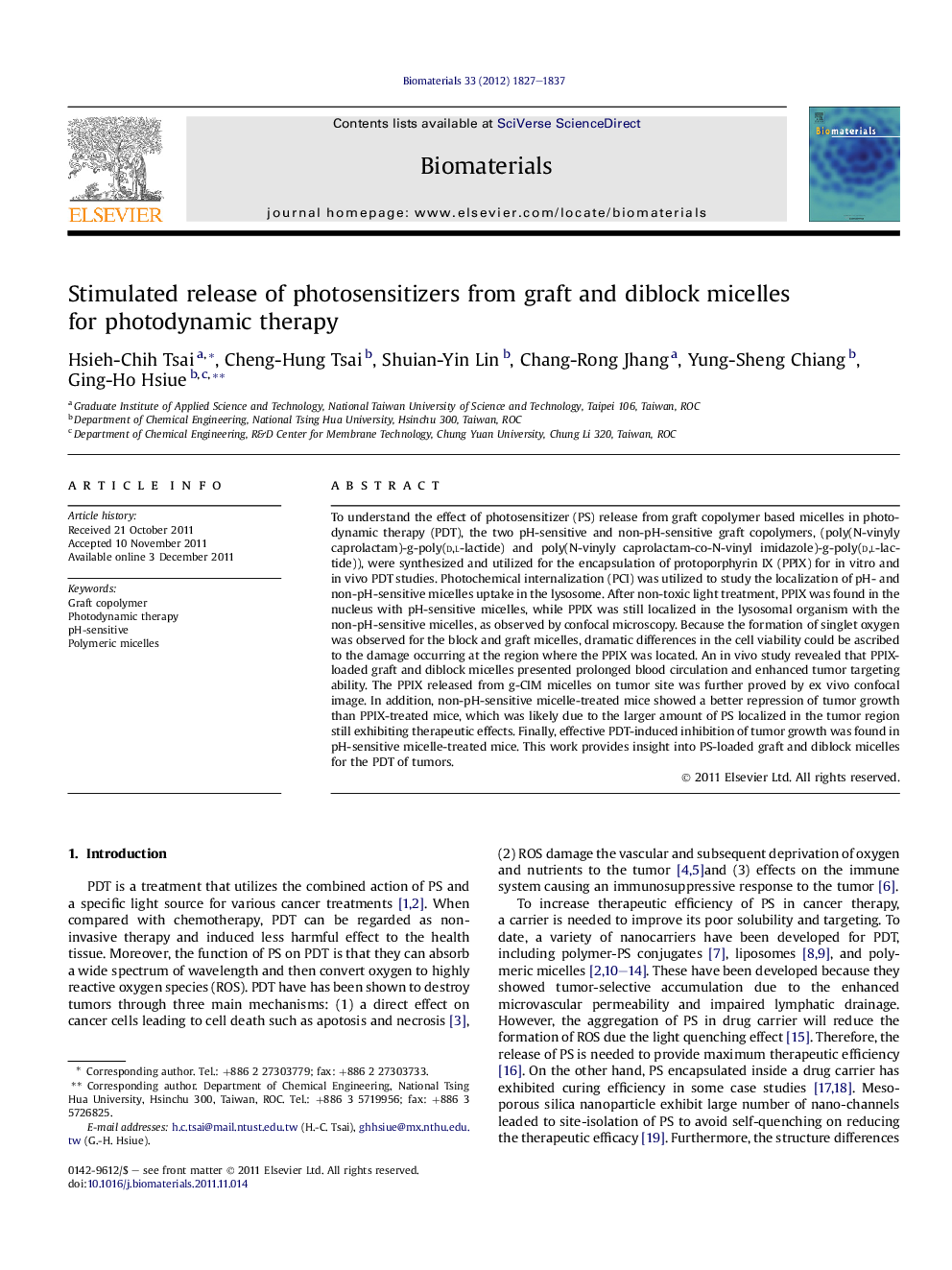| Article ID | Journal | Published Year | Pages | File Type |
|---|---|---|---|---|
| 7166 | Biomaterials | 2012 | 11 Pages |
To understand the effect of photosensitizer (PS) release from graft copolymer based micelles in photodynamic therapy (PDT), the two pH-sensitive and non-pH-sensitive graft copolymers, (poly(N-vinyly caprolactam)-g-poly(d,l-lactide) and poly(N-vinyly caprolactam-co-N-vinyl imidazole)-g-poly(d,l-lactide)), were synthesized and utilized for the encapsulation of protoporphyrin IX (PPIX) for in vitro and in vivo PDT studies. Photochemical internalization (PCI) was utilized to study the localization of pH- and non-pH-sensitive micelles uptake in the lysosome. After non-toxic light treatment, PPIX was found in the nucleus with pH-sensitive micelles, while PPIX was still localized in the lysosomal organism with the non-pH-sensitive micelles, as observed by confocal microscopy. Because the formation of singlet oxygen was observed for the block and graft micelles, dramatic differences in the cell viability could be ascribed to the damage occurring at the region where the PPIX was located. An in vivo study revealed that PPIX-loaded graft and diblock micelles presented prolonged blood circulation and enhanced tumor targeting ability. The PPIX released from g-CIM micelles on tumor site was further proved by ex vivo confocal image. In addition, non-pH-sensitive micelle-treated mice showed a better repression of tumor growth than PPIX-treated mice, which was likely due to the larger amount of PS localized in the tumor region still exhibiting therapeutic effects. Finally, effective PDT-induced inhibition of tumor growth was found in pH-sensitive micelle-treated mice. This work provides insight into PS-loaded graft and diblock micelles for the PDT of tumors.
